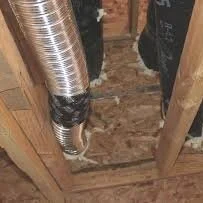Decoding the Types of Furnace Odors
A reliable service provider will clean and improve the ductwork to prevent future issues and maintain air quality.
A furnace is one of the essential appliances in the home, keeping it warm. But when it emits strange smells, it tells the homeowners there’s a problem that needs to be addressed quickly.
We’ll cover the different smells furnaces may produce and what they may indicate. We’ll also address how to eliminate them and ensure the furnace is working correctly.
Dust burning
When the furnace is unused, dust covers the surface areas and can form a thicker film. The dust is eliminated once the furnace engages, creating a burning smell. The odor typically disappears within a few days and shouldn’t cause alarm. However, when the smell lingers for more than a week, it may mean a severe issue with the furnace. If changing the air filter doesn’t fix the problem, homeowners should contact a professional and schedule an inspection.
Metallic smell
A metallic smell is concerning, as it may point to overheating. If one of the internal components is malfunctioning, the home becomes filled with an odor of melting plastic or rubber. Homeowners who notice metallic smells need to power down the furnace to contain the situation and immediately reach out to an expert.
Musty smell
A damp smell permeating the home means moisture has gotten into the furnace. Homeowners should inspect the drain pan to see whether the attached hose has become loose. Bumping up the heat usually eliminates the strange odor. If the smell persists, it’s best to schedule a checkup to discover the root of the problem.
Rotten egg smell
Gas companies place special chemicals into gas to alert homeowners that they’re dealing with a gas leak. The substances have a strong smell similar to that of rotten eggs. Anyone who notices these unpleasant smells should immediately switch off the furnace and reach out to their gas company since a gas leak is a significant safety hazard.
Moldy smell
When the furnace emits a moldy smell, mold has likely spread to the ductwork. Mold inside the furnace negatively impacts indoor air quality and can affect the occupants’ health. Extended mold exposure can lead to coughing and sneezing and is especially dangerous for people suffering from asthma or mold allergies.
A reliable service provider will clean and improve the ductwork to prevent future issues and maintain air quality.
Pet smell
Homeowners who detect the smell of pet droppings whenever they power on the furnace should inspect their ventilators. Sometimes waste and hair accumulate next to the vent and disrupt airflow. After cleaning the mess, homeowners can relax and breathe freely.
Chemical smell
Chemical odors shouldn’t be ignored, as they often signal a crack in one of the furnace’s internal components. In severe cases, the heat exchanger may be damaged. Once it malfunctions, it can set the entire furnace ablaze and start a house fire. Homeowners who catch a chemical whiff need to switch off the furnace and seek professional help.
Keep the furnace up and running
When unpleasant smells are coming from the furnace, homeowners need to take action and schedule an inspection. A professional will assess the situation and determine what’s causing trouble. They’ll also recommend a maintenance plan to keep the furnace in perfect condition.
If you need experienced and trained technicians for furnace installation, furnace maintenance, furnace replacement, and furnace repair, contact Above and Beyond Air Conditioning & Heating at (210)794-9895. Emergency services are available 24/7.

